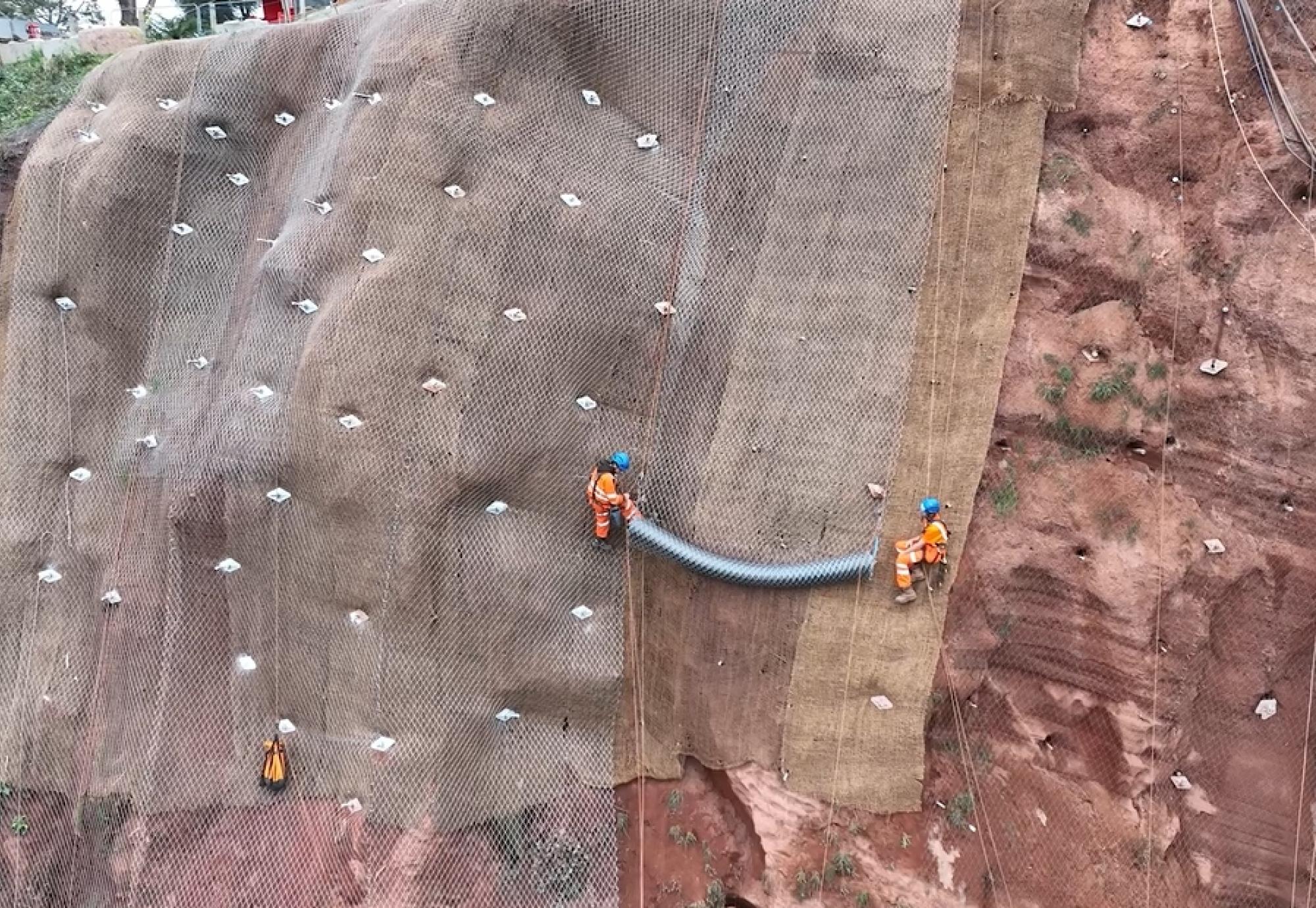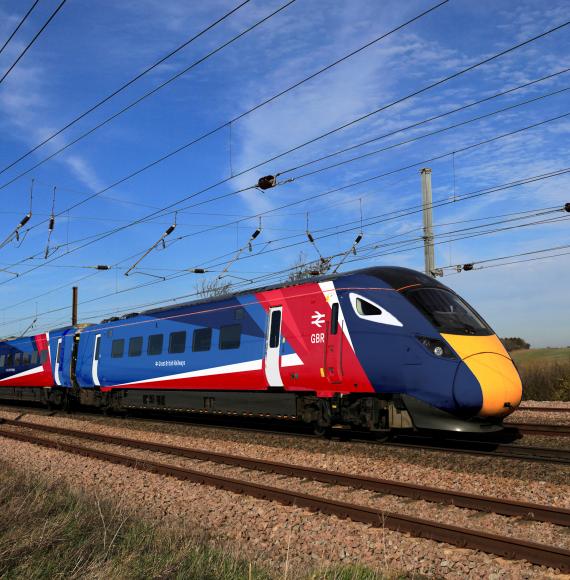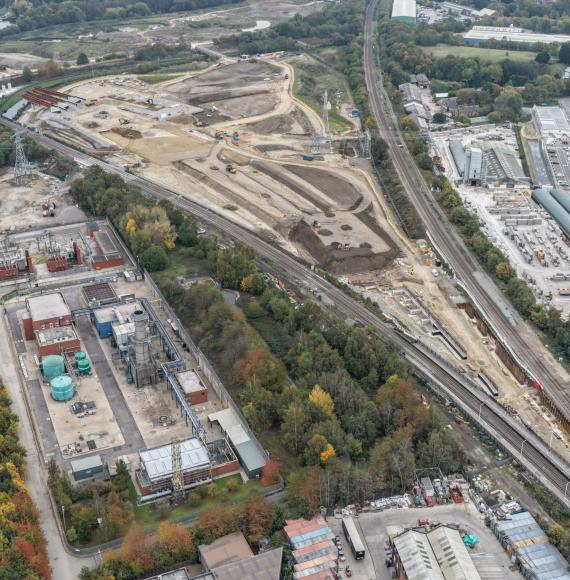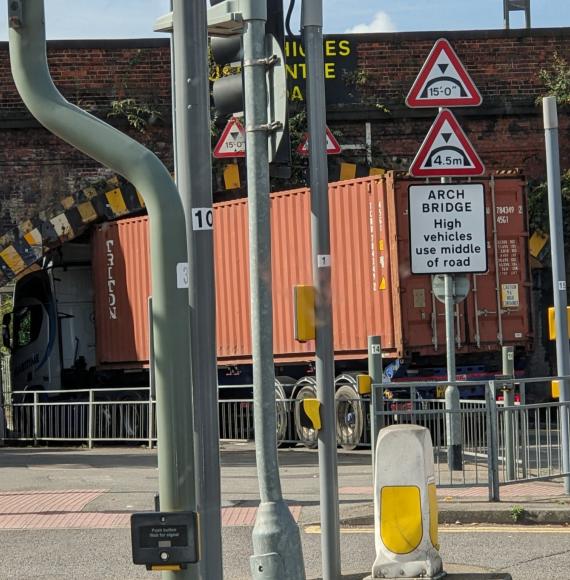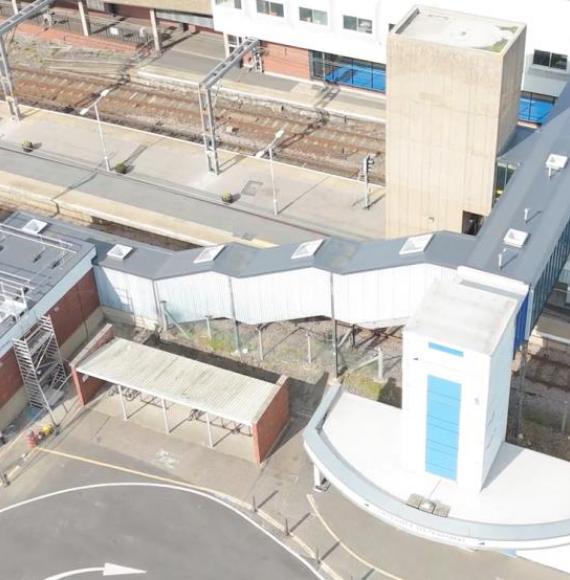The resilience work on the Devon cliffs between Dawlish and Holcombe, aimed at safeguarding the iconic coastal railway line, has been successfully completed. This project, which began in July 2023, involved Network Rail implementing various protective measures to prevent loose material from falling onto the railway below.
Funded by the Department for Transport, the £37 million project is a key part of the South West Rail Resilience Programme, designed to enhance the reliability of the line between Exeter and Newton Abbot. As part of the project, 19,700 square metres of stainless steel netting were installed on the high-risk red cliffs above the railway. Engineers, using secure harnesses, abseiled down the cliff face to drill over 6,000 soil nails into the rocks at depths of up to 13 metres.
In a cost-effective and innovative approach, the soil nails were made from a combination of stainless and galvanised steel. The galvanised sections, driven deeper into the cliff, are protected from corrosion.
Preparation for the project began in the summer of 2023, with Network Rail’s contractor, BAM Nuttall, removing topsoil from the land above the cliffs and establishing road networks for transporting materials and machinery. Throughout the project, special care was taken to protect the local ecology, particularly as some cliffs are part of the Dawlish Cliffs Site of Special Scientific Interest, known for its unique biodiversity and striking geological features.
In the spring of 2024, a worker discovered a tawny owl nesting in a recess in the cliff face, guarding two eggs. To protect the bird, work in the immediate area was halted, and a camera was set up to monitor the nest. The project resumed once the two owlets had successfully fledged.
Alina Wolfe-Murray, Network Rail’s sponsor, said: “We’re pleased to have completed another milestone in the South West Rail Resilience Programme, which was set up following the storm of 2014 to help protect the railway between Dawlish and Teignmouth from the effects of extreme weather. It follows on from the construction of the new sea wall at Dawlish and the rockfall shelter just north of Parson’s Tunnel, which was completed last year.
“Care was taken to ensure that local wildlife was protected, including the owl family, and our resilience features still allow for people to appreciate the unique red cliffs, which are recognised as a Site of Special Scientific Interest.
“Alongside the stainless-steel netting, we have also used biodegradable coir matting, which allows for the regrowth of vegetation.
“This work, alongside the rockfall shelter and the Dawlish sea wall, will help to protect this vital line for generations to come.”
Yan Sayles, senior project manager at BAM said: “BAM has a long and proud history of helping to preserve and protect the railway in Dawlish, so we’re delighted to bring another phase of this work to a close. Unfortunately, climate change is a clear and present threat to coastal communities across the UK, so we take a lot of pride in helping to improve the resilience of our infrastructure and particularly our railways. We’d like to thank the local community once again for the patience and cooperation while we carried our work.”
Rail Minister Lord Hendy said: "Everyone should have peace of mind knowing they can travel no matter the weather, and this important project helps provide that by giving long-term resilience for this vital stretch of railway.
“Ten years since the Dawlish storm severed the South West from the rest of the network, significant Government investment has ensured the line is now better safeguarded against extreme conditions, boosting the region’s connectivity and economy for years to come.”
Image credit: Network Rail

